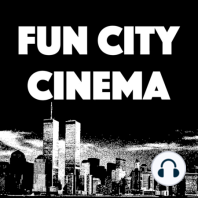5 min listen
Our new show - A Very Good Year
FromFun City Cinema
ratings:
Length:
2 minutes
Released:
Nov 2, 2022
Format:
Podcast episode
Description
“Fun City Cinema” hosts Jason Bailey and Mike Hull proudly present “A Very Good Year,” a new podcast with a simple premise: each week we invite a guest (filmmakers and actors, critics and historians, comedians and musicians) who loves movies, and ask them to select their favorite year of movies. Some pick a year from their movie-going past; some go deep into film history. Whichever the case, we spent (about) an hour talking about that year: we ask them to share their top five films of the year, and tell us why they love them; we look at the year’s news headlines, award winners, and box office champions; and we finish with a lightning round, where we talk about as many films as possible in as few minutes as possible.
“A Very Good Year” debuts this fall; our guests include Bilge Ebiri, Roxana Hadadi, Keith Phipps, Drew McWeeny, Dana Stevens, and Alex Winter.
“A Very Good Year” debuts this fall; our guests include Bilge Ebiri, Roxana Hadadi, Keith Phipps, Drew McWeeny, Dana Stevens, and Alex Winter.
Released:
Nov 2, 2022
Format:
Podcast episode
Titles in the series (17)
Introducing Fun City Cinema by Fun City Cinema
